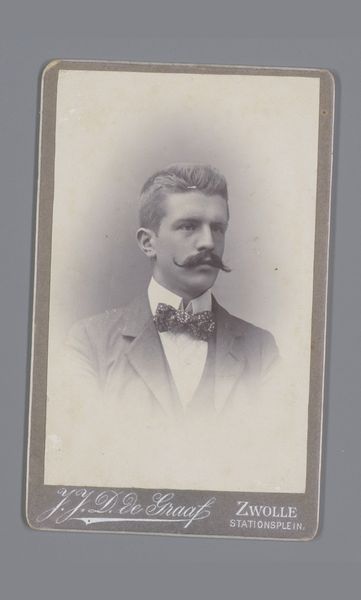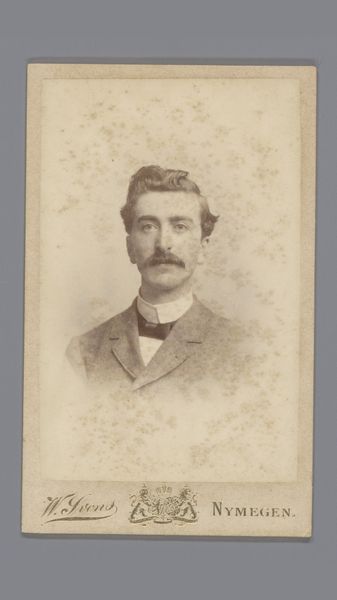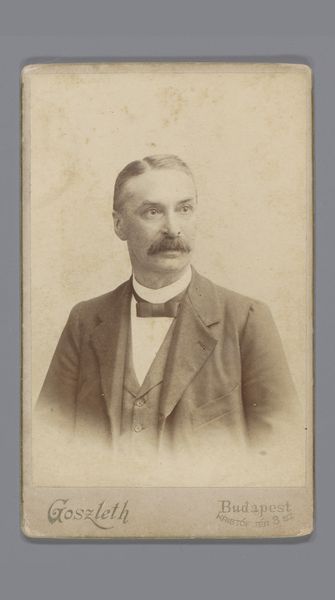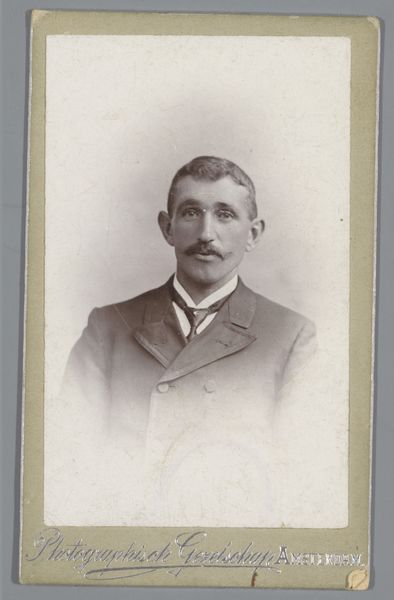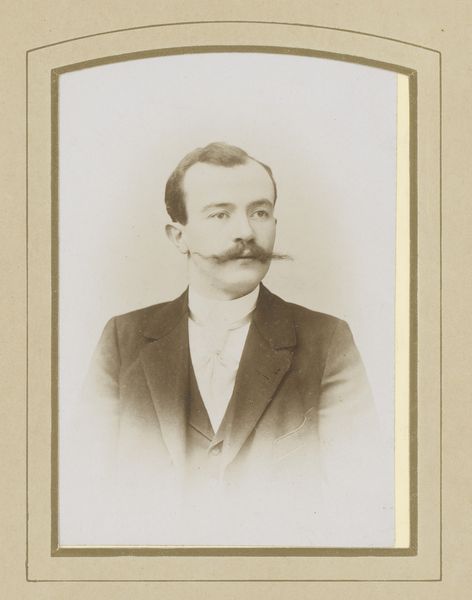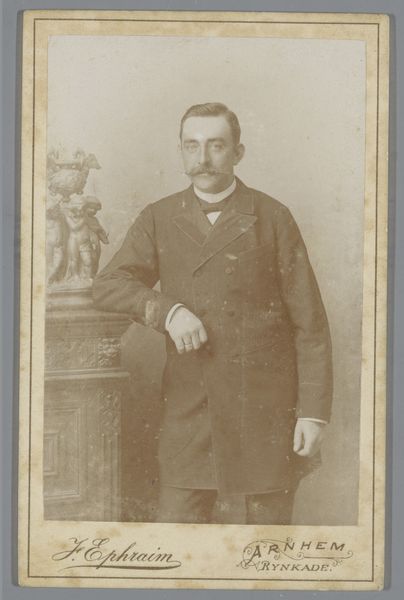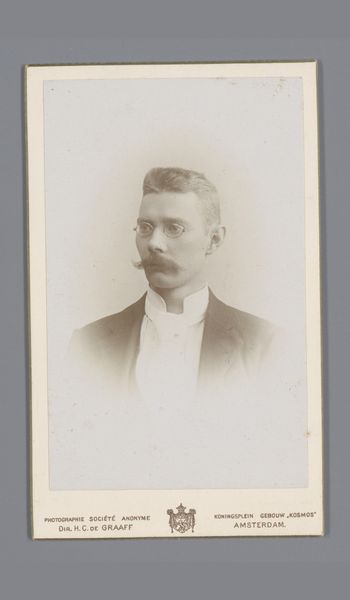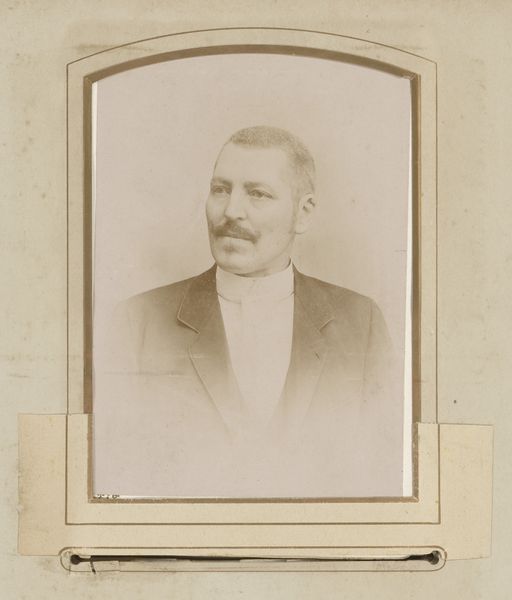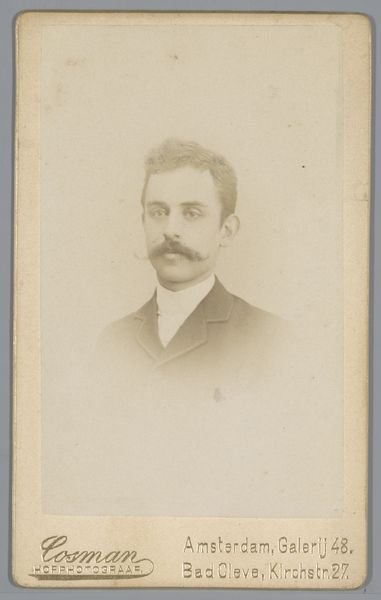
photography
#
portrait
#
pictorialism
#
photography
#
coloured pencil
Dimensions: height 107 mm, width 63 mm
Copyright: Rijks Museum: Open Domain
Editor: So this is "Portret van een onbekende man," a portrait made between 1900 and 1914 by Hellis & Sons, a photography studio. It’s interesting how they created what looks like a painterly effect, though it’s photography. How would you interpret this piece? Curator: I see a fascinating study in the material conditions of early photography and portraiture. We must consider the materiality of this object: the treated paper, the chemical processes, the subtle tonal shifts created by light interacting with silver salts. This wasn’t just image-making, it was labor. Consider the photographer’s meticulous posing of the subject and the material investment required for the photographic studio. It speaks to the aspirations of a rising middle class seeking to represent themselves through the industrial, and burgeoning artistic, medium of photography. The man's suit, the chair; they are all commodities displayed within the photograph. Do you see the connections there? Editor: That makes sense. It’s not just about capturing a likeness, but about demonstrating a certain level of societal status through manufactured objects. Curator: Precisely. The image’s value, then, is deeply embedded in its means of production and the consumer culture it reflects. And what about the role of "Hellis & Sons" as a commercial enterprise and artistic manufacturer, how do they both respond and contribute to the pictorialist style through mass produced studio settings? Editor: That’s something I hadn’t really considered. I guess I was more focused on the artistic aspects, but seeing it as a material product with social implications gives it a completely different dimension. Thank you! Curator: Indeed. By examining the materials and social contexts, we reveal a more nuanced understanding of not just art but the historical moment.
Comments
No comments
Be the first to comment and join the conversation on the ultimate creative platform.


